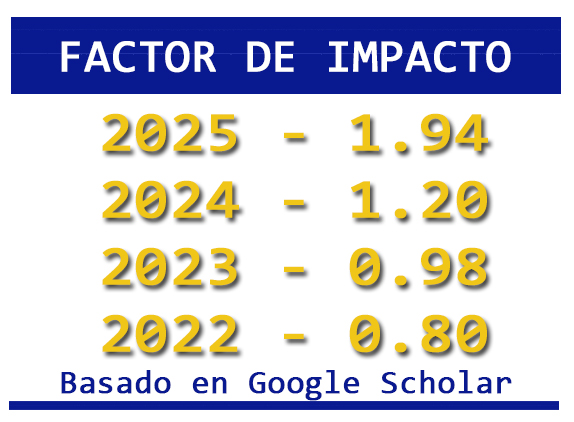Recent studies on electric arc and hybrid welding in AHSS steels
DOI:
https://doi.org/10.36790/epistemus.v19i38.423Keywords:
welding, advanced high strength steel, hybrid, electric arcAbstract
Welding processes are crucial in the fabrication of metal structures used in industries such as automotive and aerospace. Advances in arc welding and innovations in hybrid welding, which simultaneously combine two distinct processes, have evolved to meet the demand for quality and productivity in the manufacturing of metal components. Advanced High-Strength Steels (AHSS) stand out in this sector due to their microstructure and mechanical properties, which require advanced welding techniques. Hybrid techniques have enabled better thermal control and reduced distortions, which are essential for preserving the mechanical properties of AHSS. This work reviews recent literature to analyze key factors in the quality of welded joints, such as material composition, present phases, and heat input management, contributing to the optimization of operational parameters and expanding knowledge on these advanced techniques.
Downloads
References
C. Y. A. Nalle, M. B. Aditya, F. G. A. P. Putra, M. N. Nalle, y R. P. Sumarta, ¨Analysis of Electric Current on Aluminum Plate Welding Using MMA (Manual Metal Arc) Method¨, ICANEAT, vol. 1, n.o 1, pp. 144-146, ene., 2024, doi: 10.61306/icaneat.v1i1.222.
O. Bohórquez, A. Pertuz, y M. Rincón-Ortíz, ¨An overview framework of welding process selection, current state and expectatives¨, J. Phys.: Conf. Ser., vol. 2046, n.o 1, p. 012076, oct., 2021, doi: 10.1088/1742-6596/2046/1/012076.
S. Sarkar, M. Ahmed, M. A. H. Chowdhury, y G. Melton, ¨Life Cycle Assessment (LCA) Results of MIG and TIG Welding Technologies Using the IMPACT 2002+ Methodology¨, IJMERR, vol. 11, n.º 8, pp. 564-568, ago, 2022, doi: 10.18178/ijmerr.11.8.564-568.
G. Aryan, ¨Enhancing Weld Quality: A Review of Optimization Techniques for Electric Arc Welding Parameters in Mild Steel Grade Fe 500 Using Taguchi Method¨, IJRASET, vol. 12, n.o 4, pp. 3309-3312, abr. 2024, doi: 10.22214/ijraset.2024.60612.
D. P. Il’yashchenko, D. A. Chinakhov, y E. V. Lavrova, ¨The Effect of Energy Parameters of Power Sources on the Structure and Properties of Permanent Joints at Manual Arc Welding¨, Metals, vol. 14, n.o 7, p. 759, jun. 2024, doi: 10.3390/met14070759.
P. Sonia, P. V. Mahesh, G. Nijhawan, S. H. Hlail, R. V, y A. K. Rao, ¨Review on Hybrid Welding Techniques for Improved Joint Performance¨, E3S Web Conf., vol. 505, p. 01022, 2024, doi: 10.1051/e3sconf/202450501022.
D. Raabe, B. Sun, A. Kwiatkowski Da Silva, B. Gault, H. Yen, K. Sedighiani, et “Current challenges and opportunities in microstructure-related properties of Advanced High Strength Steels”, Metallurgical and Materials Transactions 50th Anniversary Collection, vol. 51, pp. 5517-5586, 2020, https://doi.org/10.1007/s11661-020-05947-2.
T. Kvackaj, J. Bidulská, y R. Bidulský, ¨Overview of HSS Steel Grades Development and Study of Reheating Condition Effects on Austenite Grain Size Changes¨, Materials, vol. 14, n.o 8, p. 1988, abr., 2021, doi: 10.3390/ma14081988.
R. Pereira, N. Peixinho, y S. L. Costa, ¨A Review of Sheet Metal Forming Evaluation of Advanced High-Strength Steels (AHSS)¨, Metals, vol. 14, n.o 4, p. 394, mar., 2024, doi: 10.3390/met14040394.
P. Nirmala Shivram, ¨Different Welding Processes Using Statistical and Numerical Approaches Using the Fuzzy TOPSIS Method¨, JMC, vol. 1, n.o 1, pp. 46-52, sep., 2022, doi: 10.46632/jmc/1/1/6.
American Welding Society, Standar Welding Terms and Definitions, 13ª edición, Estados Unidos de América: ANSI, 2020.
Y. Zhang, Q. Wang, y Y. Liu, ¨Adaptive Intelligent Welding Manufacturing¨, WJ, vol. 100, n.o 01, pp. 63-83, ene., 2021, doi: 10.29391/2021.100.006.
P. Vara Laksimi, A. Bhuvan, Ch. Pavan, Ch. Sai Preetham, y K. S. Naik, ¨Deformation and its Effect on Smaw Joint¨, IRJMETS, vol. 5, n.º 12, dic., 2023.
A. K. Perka, M. John, U. B. Kuruveri, y P. L. Menezes, ¨Advanced High-Strength Steels for Automotive Applications: Arc and Laser Welding Process, Properties, and Challenges¨, Metals, vol. 12, n.o 6, p. 1051, jun., 2022, doi: 10.3390/met12061051.
S. Elfallah, ¨Effect of GTAW on the Tensile Strength and Hardness of Mild Steel¨, AWET, vol. 33, pp. 95-100, dic., 2022, doi: 10.35219/awet.2022.08.

Published
How to Cite
Issue
Section
License
Copyright (c) 2025 EPISTEMUS

This work is licensed under a Creative Commons Attribution-NonCommercial-ShareAlike 4.0 International License.
The magazine acquires the patrimonial rights of the articles only for diffusion without any purpose of profit, without diminishing the own rights of authorship.
The authors are the legitimate owners of the intellectual property rights of their respective articles, and in such quality, by sending their texts they express their desire to collaborate with the Epistemus Magazine, published biannually by the University of Sonora.
Therefore, freely, voluntarily and free of charge, once accepted the article for publication, they give their rights to the University of Sonora for the University of Sonora to edit, publish, distribute and make available through intranets, Internet or CD said work, without any limitation of form or time, as long as it is non-profit and with the express obligation to respect and mention the credit that corresponds to the authors in any use that is made of it.
It is understood that this authorization is not an assignment or transmission of any of your economic rights in favor of the said institution. The University of Sonora guarantees the right to reproduce the contribution by any means in which you are the author, subject to the credit being granted corresponding to the original publication of the contribution in Epistemus.
Unless otherwise indicated, all the contents of the electronic edition are distributed under a license for use and Creative Commons — Attribution-NonCommercial-ShareAlike 4.0 International — (CC BY-NC-SA 4.0) You can consult here the informative version and the legal text of the license. This circumstance must be expressly stated in this way when necessary.
The names and email addresses entered in this journal will be used exclusively for the purposes established in it and will not be provided to third parties or for their use for other purposes.














